All About Scallions & FODMAPs
You Can Eat Scallion Greens! This Explore An Ingredient will tell you everything you need to know about scallions & FODMAPs.
Scallions (Allium fistulosum) can be eaten on the low FODMAP diet, as long as you stick to the green portions.
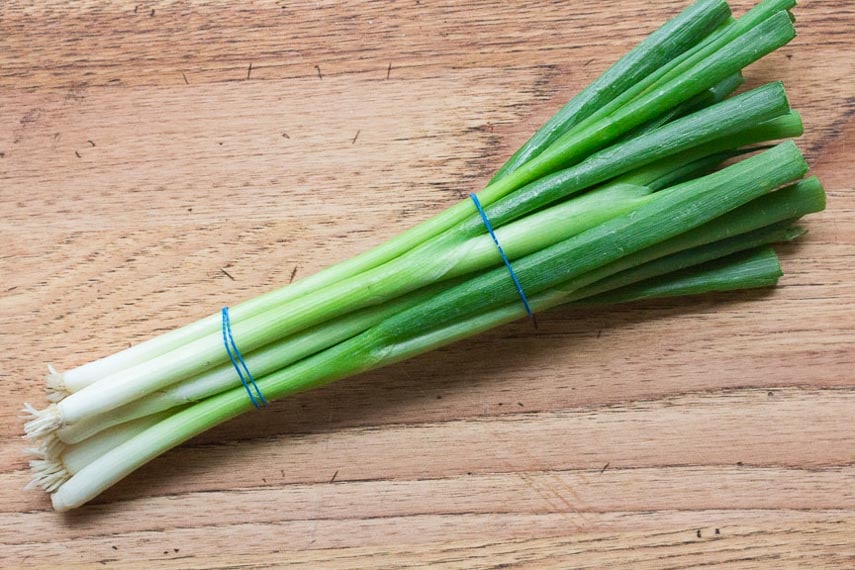
Monash University has lab tested 16 g (about ½-ounce) amounts of the green portion, which equals about a heaping ¼ cup chopped of the green part the scallions and no FODMAPs were detected. This is what they considered a serving, at the time.
As of September 2022 Monash retested scallions. They reported that scallion greens (tops) are low FODMAP in 1 ½ cups, which is what they call a serving, which equals 75 g. They become Moderate at 5 ⅓ cups or 265.
They also tested the bulb and it is high FODMAP at 1 cup (75 g) showing fructose and fructans. Why they did not test a smaller amount like they did for leek bulb, we have no idea.
FODMAP Friendly has also lab tested both the bulb and tops. They report a low FODMAP amount of the bulb at 19 g. They peg a serving size of the scallion greens at 16 g, with a maximum low FODMAP serve at 161 g.
Please read our article on when lab test results disagree.
Fructans (contained within the “O” for Oligosaccharide in the acronym FODMAP) are present in the white bulb portion and should be avoided while following the low FODMAP diet.
The green portion of scallions is shown below. Here they are roughly chopped.
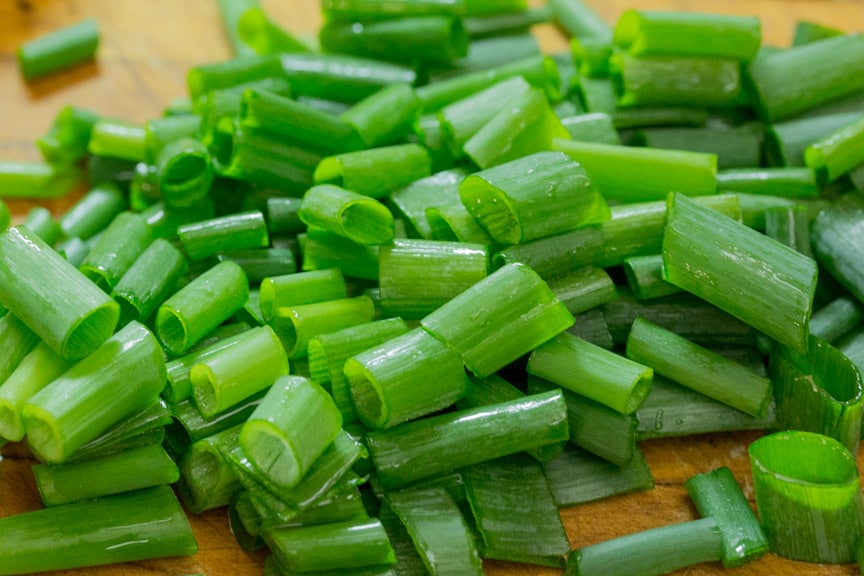
Scallion/Green Onion/Spring Onion Terminology
Monash University uses the scallion/green onion/spring onion terminology interchangeably. This is unfortunate because these are not all the same thing botanically.
Scallions and green onions are the same, but spring onions are a different cultivar.
In the image below, Scallions are on the LEFT and Spring onions are on the RIGHT.
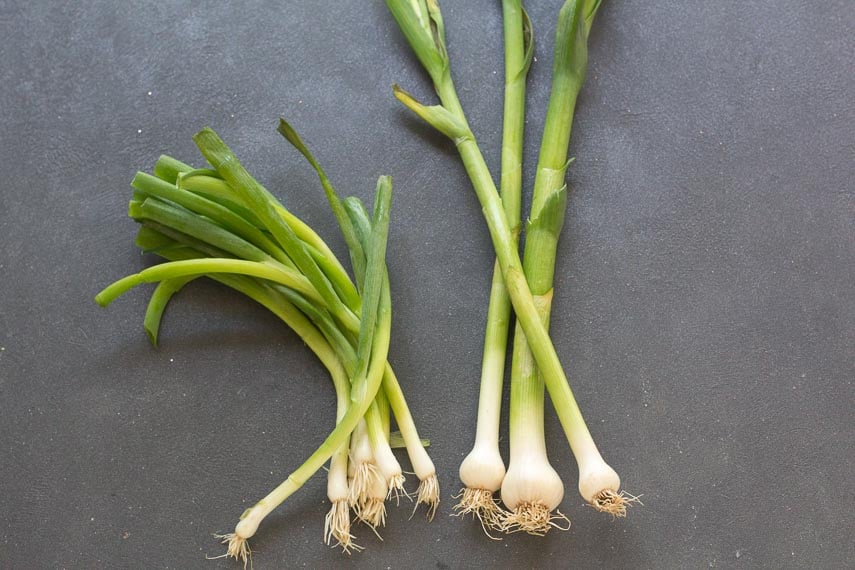
Scallions and green onions are the same. They do not form bulbs (a bulbous white portion) and they have an elongated, slender shape, top to bottom. They are sometimes referred to as bulbless.
In private correspondence with Monash they told us that they tested the onions shown above left in the image (they saw this exact image) – but they call them “Spring onions”.
Spring onions are bulb-forming onions (Allium cepa) that are harvested young, when the bulb is still very tender. The look similar to scallions, but they have a bulbous white portion, attached to the root. As far as we know, Spring onions have NOT been lab tested.
The green portion of scallions is tubular (hollow), which you can see below.
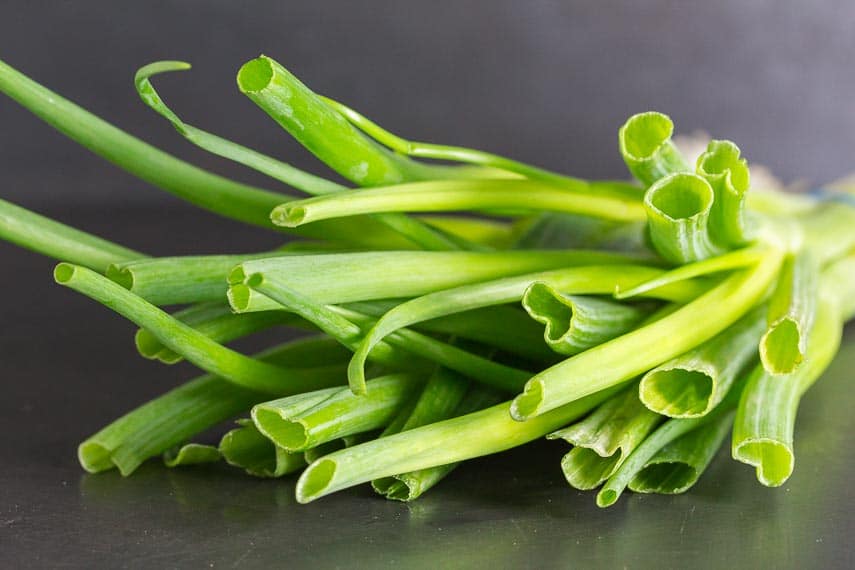
Scallions are also sometimes referred to as “bunching onions” in certain parts of the world.
The Latin word fistulosus means hollow and references they hollow stems of the scallion.
How Do I Know What Is In My Market?
Great question! Your supermarket or even the farmers market stalls might use one terminology or the other – and it might not actually be representative of what the vegetable is botanically.
If you see no bulb – it is straight top to bottoming with no bulbous white portion – it is probably a scallion/green onion.
If there is a white bulbous portion, it is probably a spring onion.
Read our article What If A Food Has Not Been Lab Tested? for more information about using foods that have not formally gone through FODMAP testing.
Scallions & FODMAPs: Onion Flavor Without Triggering IBS
The fructans in the white bulb of scallions can trigger IBS symptoms, which is why we steer clear of that portion of this onion.
You can eat scallion greens, which contain no fructans.
You Can Also Use The Whole Scallion In Specific Ways
The good news is that fructans are NOT oil-soluble, which is why it is possible to make onion-infused oil – we have an easy recipe (or purchase it) – and it will remain a low FODMAP product. This is one of the best ways to incorporate onion flavor into your low FODMAP cooking.
Since the fructans are not oil soluble, you can use the entire scallion, green and white portions, or even actually onions (white, yellow or red), to make infused-oil, if the proper techniques are followed, which are outlined in our recipe.
Please refer to our recipe for Onion-Infused Oil to learn more.
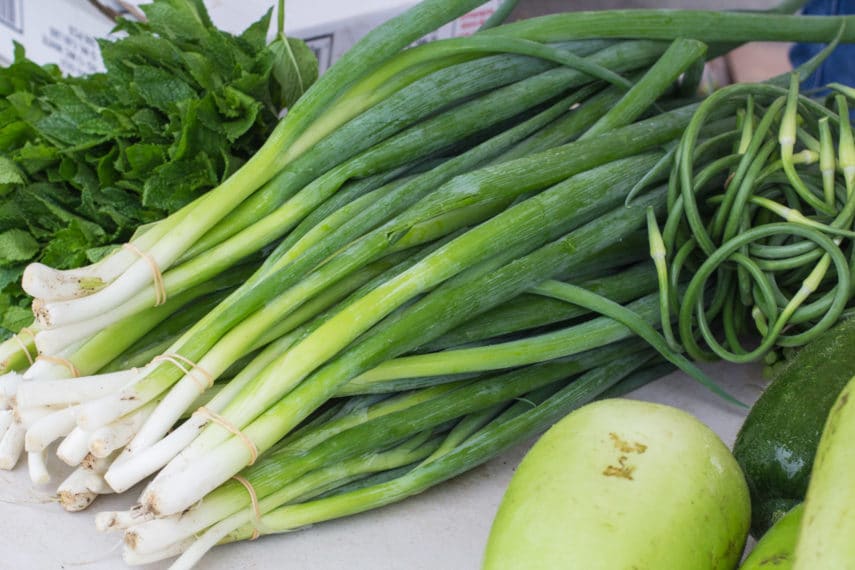
Scallions & FODMAPs
How To Buy
Scallions are typically sold in bunches of about 6 to 8 scallions and an entire bunch weighs approximately 4-ounces (115 g).
Look for greens that are vibrant, crisp and firm. They should not be floppy or soft. The roots, which are often intact, should also look fresh and not at all slimy.
How To Store
Bring your scallion bunches home and place the root end in a container filled with a couple of inches of cool water. Place a plastic bag loosely over the greens and store in the refrigerator.
Change the water every couple of days. The scallions should last about a week and retain their crispness.
How To Prep
For our FODMAP purposes, the first thing we are going to do is remove the greens from the white/root portion. This should be fairly easy to see. Look at the image below. The greens of one “bunch” average about 1-ounce (30 g) in weight.
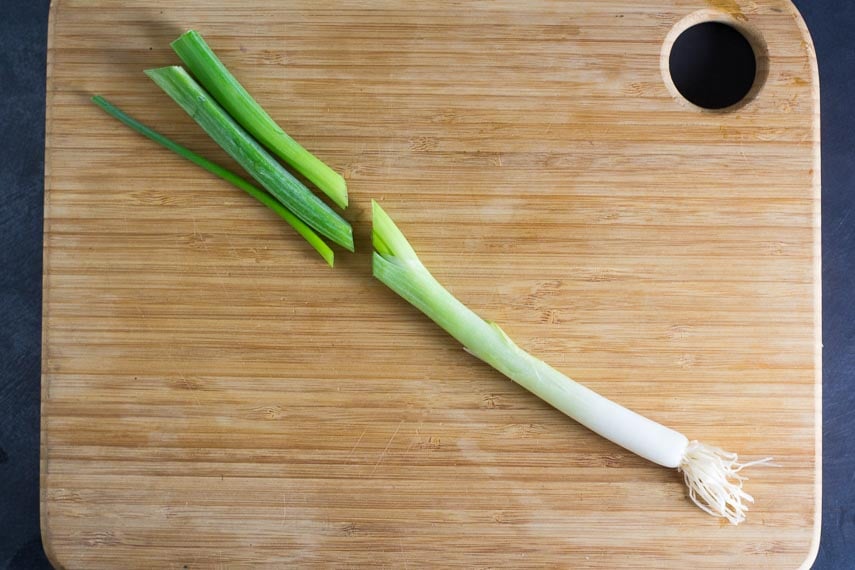
One you have the greens separated, simply prepare them as directed in individual recipes. They are usually chopped, sliced or minced.
The smaller they are chopped, the stronger their onion flavor. Cooking also mellows their flavor.
Don’t discard your white portions! You can re-grow the greens! Read on below.
How To Grow
You can of course grow scallions in the garden if you are so lucky to have access. But you can also grow scallion greens at home in a glass!
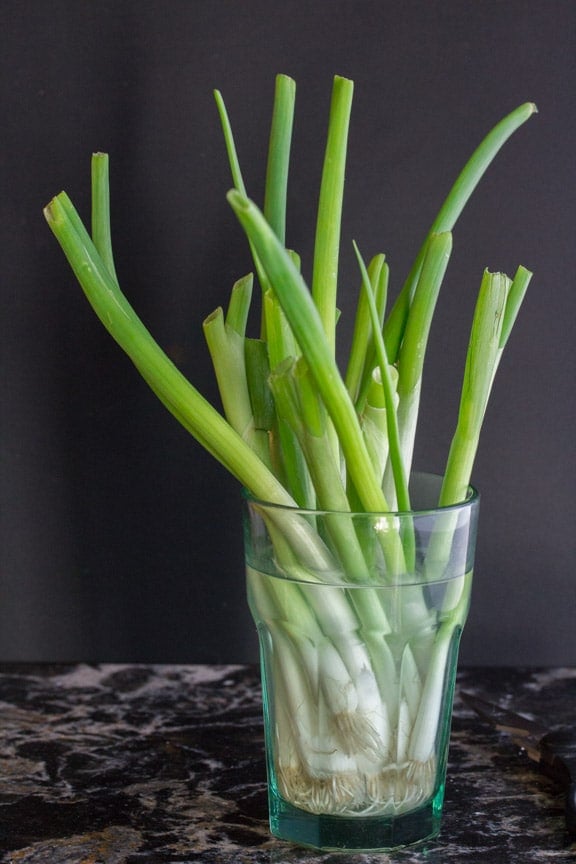
Once you have used the scallion greens and are left with the white portion and attached root, you can re-grow the scallion greens in a glass of water!
And since the greens are what we need, this is a fun and frugal technique.
Check out our article Grow Your Scallions – In A Glass! to learn more.
How To Use
Scallions are just as often cooked as they are used raw.
Cooking will mellow their flavor, while used raw will showcase their sharpness. They are still mellower than yellow or white onions.
You can use the whole scallion to make Onion-Infused Oil and we highly recommend that you try it. You can choose to use olive oil as a base or a more neutral vegetable oil, such as canola, rice bran or sunflower.
The olive oil base is best for Italian and Mediterranean cooking. Neutral oil bases are best for Asian and Mexican cooking, as examples.
Most infused-oils on the market are olive oil based. Making your own allows you to control this choice.
Of course, you can use the onion-infused oils any way you like as they are low FODMAP!
FYI, we have a Garlic-Infused Oil recipe as well.
Go Cook & Eat Scallions!
We hope this information about Scallions & FODMAPs will encourage you to use them in your low FODMAP cooking in all the diet-complaint ways that they can be enjoyed!
We have many recipes for you that feature scallions and onion flavor, such as:
- Our low FODMAP Chicken Enchiladas
- Triple Onion Green Beans
- Low FODMAP Fresh Salsa
- Onion Soup
- Slow Cooker Pot Roast
- Turkey Coconut Curry
- Pad Thai with Shrimp
- Vietnamese Summer Rolls
- Korean Short Ribs
- Cheddar Scallion Biscuits
- Low FODMAP Jambalaya
- Peanut Zoodles
- Chicken, Cheese & Broccoli Twice-Baked Potatoes
- Scallion Pancakes
AND SO MANY MORE!

